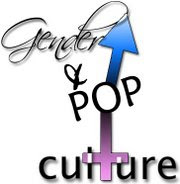As one of the most popular products in the United States, Coca-Cola is commonly associated with feelings of nostalgia and patriotism. These positive emotions have been strategically packaged and sold to Americans for years, impacting the consumer behaviors of both males and females alike. This demographic changed in 2006 when the Coca-Cola Company launched a new product primarily targeting adult males. The new soft drink “Coke Zero” was produced and sold largely for the male population as an alternative to the classic Coca-Cola drink. Utilizing specific coloring, changing the use of language, illustrating male values and attitudes, and providing strong images of masculinity in Coke Zero advertisements include some of the ways the Coca-Cola Company is able to sell their product exclusively to men.
Viewing all the images pictured in the advertisements, it is easy to see that the male gender was specifically targeted when selling “Coke Zero”. The two most obvious tactics to gain the attention of male consumers dealt with color and language. Although “Coke Zero” is a soft drink with no calories, generally known as ‘diet soda’, it was named differently so as to avoid the widespread association with females and dieting. Not only is the brand name enforcing the idea that “Coke Zero” is a male product, but the coloring of the packaging of the soda invoke what is commonly believed to be male style. Pat Kirkham and Alex Weller mention this form of gender advertising by noting the following: “Recent advertisements for the ‘male’ products were produced in black and white whereas those promoting ‘female’ products feature full color” (268). Coloring the advertisements and packaging black and changing the conventional name of the product provide evidence that “Coke Zero” is predominantly a product fashioned for males.
“Coke Zero” can also be viewed as a product intended for males because of the use of images that stand for typical masculine ideals. Jackson Katz mentions the traditional method advertisers utilize to assert masculinity: “One of the ways this is accomplished, in the image system, is to equate masculinity with violence, power, and control” (352). In the “Coke Zero” advertisements above, the center photo depicts a strong masculine figure in total control. In fact, the man is so focused, fearless, and powerful that he is able to balance the coke product on his head. Likewise, other advertisements depict typical male activities that include the soft drink. This type of advertisement associates ‘maleness’ with strength and control, leaving a lasting impression on the consumer to equate these positive qualities with “Coke Zero”. This ‘male’ style and imagery, along with the coloring and language of the product, allow for “Coke Zero” to gain a consumer base that is largely adult men.
Works Cited
Katz, Jackson. "Advertisting and the Construction of White Masculinity: From Eminen to Clinique for Men." Sage Publications. (2003): 249-258. Print.
Kirkham & Weller. "Cosmetics: A Clinique Case Study." Gender, Race, and Class in Media. Thousand Oaks: Sage Publications, 2003. 268-73. Print
Images retrieved from:
http://scotthull.com/artists/files/2009/01/feature-graphiccoke.jpg
http://www.rob.snookles.com/uploaded_images/1024-768_02-792998.jpg
http://juxtinteractive.com/_media/images/coke-zero-putt-for-par-game-lg01.jpg
http://i.usatoday.net/money/_photos/2007/10/29/ad-cokex.jpg
http://assets.espn.go.com/media/motion/2009/0201/ad_coke_zero_19.jpg
http://ambienceimagery.smugmug.com/photos/346129990_a9xK8-M.jpg
http://www.jackbook.com/wp-content/uploads/2009/01/coke-zero.jpg
Friday, May 21, 2010
Subscribe to:
Post Comments (Atom)


Great job.
ReplyDeleteSome things I liked:
- Great product choice for this analysis; I would have never thought about using Coke Zero for this assignment but the ads work well with the readings.
- The analysis regarding the use of color fits especially well here.
- As does the use of athletic, muscular men.
Some things that might need improving:
- The in-text citations might not be done correctly; I think you're supposed to include the author's name in parenthesis with the page number but there may be some rule allowing you to not do that. I defer to Jessie.
- You could have maybe tied the use of the unrealistically muscular bodies to the readings more in the third paragraph.
Jess-
ReplyDeleteI think you chose a great product...like "Diet Coke...for Men" :o)
Chris is right about the quote format; however, you don't need the author's name in the parenthetical reference if you use it in the sentence that includes the quote (just page number is fine). The format issue I noticed with your quotes was the use of semi-colons to incorporate the quote into the sentence where two sentences would have been a bit more logical--with the second sentence incorporating the quoted material from the author.
I also agree with Chris regarding the unrealistically muscular body-issue for the third paragraph.
Overall, nice work!
:O)
Jessie
Hi Jessica!
ReplyDeleteI am writing an investigative report about the marketing strategies of Coke Zero, in order to target a male demographic and would like to know where you retrieved one of your print ads from as the source you listed is not working.The advertisement I'm discussing is in your collage and displays a man from the waste to the neck, with focus on his abs. Would be great if you could list a source!
Thank you
"http://ambienceimagery.smugmug.com/photos/346129990_a9xK8-M.jpg"
Call 1-315-512-2220,Buy MTP Kit,Buy Tramadol Online,Buy Viagra Online at discounted prices and get best deal. Order Now and save more money.
ReplyDeletehttps://www.theworldpharmacyrx.us
We have to gather all real information for the youth, we ever update new jobs, result and much more.
ReplyDeleteRecruitment Board In India,Current Jobs in 2019, GOVT Jobs
https://www.recruitmentboards.in
9867700433
ReplyDelete